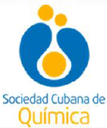Executive Secretary

7th International Chemistry Symposium
SIQ 2019
The contamination of water with persistent organic compounds, like pharmaceuticals, is a problem of global concern. Among often found active compounds in water bodies it can be cited the benzodiazepines, the most prescribed anxiolytics in the world, been the Diazepam (DZP) one of the most representative compound of this pharmacological family. Adsorption on activated carbons is among the most used secondary processes for the removal of these contaminants from polluted waters. In the present work, the adsorption of DZP on activated carbon (AC) SUPERCAP BP10 was experimentally studied and a theoretical analysis of the interaction of DZP with acidic groups (hydroxyl and carboxyl) was also carried out, to explain the pollutant-adsorbent interactions at nanoscale. The adsorption isotherms of DZP on AC at different pH and temperature were determined. The maximum adsorption value was 659.4 mg DZP/gAC, which was reached at a pH value of 7 at 25 °C. In theoretical calculations, a coronene with a functional group in the edge was used as a simplified model of AC to evaluate the influence of surface groups (SG) in the course of adsorption. The optimization of all structures by Density Functional Theory was done using M06-2X functional. The Quantum Theory of Atoms in Molecules was used to characterize the interaction types. The studied systems present mainly dispersive interactions between DZP and SG of AC.
The contamination of water with persistent organic compounds, like pharmaceuticals, is a problem of global concern. Among often found active compounds in water bodies it can be cited the benzodiazepines, the most prescribed anxiolytics in the world, been the Diazepam (DZP) one of the most representative compound of this pharmacological family. Adsorption on activated carbons is among the most used secondary processes for the removal of these contaminants from polluted waters. In the present work, the adsorption of DZP on activated carbon (AC) SUPERCAP BP10 was experimentally studied and a theoretical analysis of the interaction of DZP with acidic groups (hydroxyl and carboxyl) was also carried out, to explain the pollutant-adsorbent interactions at nanoscale. The adsorption isotherms of DZP on AC at different pH and temperature were determined. The maximum adsorption value was 659.4 mg DZP/gAC, which was reached at a pH value of 7 at 25 °C. In theoretical calculations, a coronene with a functional group in the edge was used as a simplified model of AC to evaluate the influence of surface groups (SG) in the course of adsorption. The optimization of all structures by Density Functional Theory was done using M06-2X functional. The Quantum Theory of Atoms in Molecules was used to characterize the interaction types. The studied systems present mainly dispersive interactions between DZP and SG of AC.
About The Speaker

MsC. Michel Manduca Artiles






